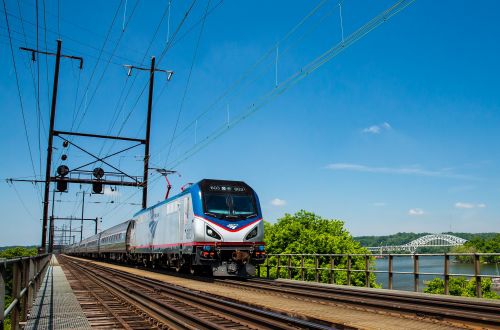Publication of the Northeast Corridor Capital Investment Plan: Fiscal Years 2018 – 2022 and the Northeast Corridor Annual Report: Operations and Infrastructure, Fiscal Year 2016 is a requirement of the Fixing America’s Surface Transportation (Fast) Act.
The policy framework calls for a federal-state funding partnership to restore infrastructure on the country’s busiest passenger rail corridor. The line carries more than 780,000 commuter rail passengers per day, with a further 40,000 passengers using Amtrak inter-city services.
A 2014 Commission study found that a loss of all NEC services for a single day “could cost the economy $US 100m in lost productivity, added congestion on the regional highway and aviation networks and other transportation-related costs.”
The Capital Investment Plan identifies the commission’s top 10 unfunded priorities for the line, which focus on addressing the corridor’s $US 38bn backlog in state-of-good-repair needs. While the plan acknowledges that it will take many years to completely clear this backlog, the plan highlights a five-year requirement for around $US 29bn for a combination of investments to improve infrastructure and enhance capacity. At present only around $US 9bn of this is currently funded.
“The states and Amtrak have stepped up to fund the corridor’s basic infrastructure and regular maintenance needs,” says Mr James Redeker, commissioner of Connecticut Department of Transportation and co-chair of the Northeast Corridor Commission. “With the Capital Investment Plan in place, we lay the foundation for the federal government to begin to help address the state-of-good-repair backlog, infrastructure assets that, while safe, are operating beyond their useful lives, increasing maintenance costs and decreasing reliability.”
In 2015, the Commission adopted the NEC Commuter and Intercity Rail Cost Allocation Policy, an agreement committing each passenger operator using the corridor to share approximately $US 1bn annually in operating and normalised replacement capital costs based on use. “This policy does not, however, fully fund the Corridor’s extensive capital needs, including the backlog,” the commission stresses.
The Northeast Corridor Annual Report: Operations and Infrastructure, Fiscal Year 2016 is the Commission’s first annual report. It documents the operational performance of NEC trains in the 2016 financial year.
The report shows Northeast Corridor stakeholders invested $US 1.06bn in infrastructure in 2016. Owners and operators contributed almost $US 460m towards track and electrification works. The remaining $US 600m funded special projects aimed at addressing the major bridges and tunnels in the state-of-good-repair backlog.
“The funding committed by states and rail agencies through the cost allocation policy provides a critical lifeline to the ageing NEC,” says Mr Stephen Gardner, executive vice-president, planning, technology, and public affairs for Amtrak. “However, without significant new state and federal investment to address the corridor’s ageing infrastructure, commuter and intercity rail service will continue to be at risk.”

